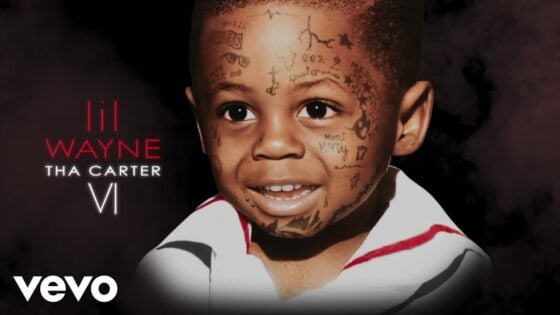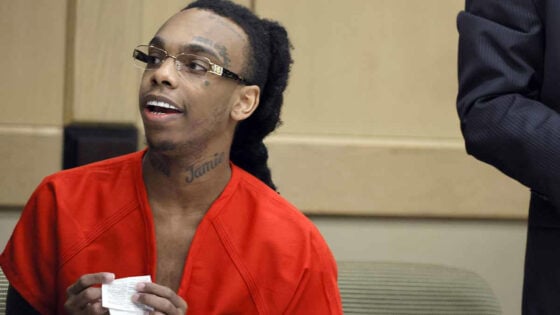Revisiting Kubrick’s Full Metal Jacket
When Stanley Kubrick’s Full Metal Jacket appeared in theaters in the summer of 1987, it was clear to critics and viewers that he had made another in a series of important films. Less clear was what the movie added to previous cinematic depictions of the Vietnam War. Francis Ford Coppola’s Apocalypse Now (1979) had already created a definitive portrait of the madness of war. Anti-war films like The Deer Hunter (1978) and Platoon (1986) focused on the trauma of the lowly foot soldier, whereas The Green Berets (1968) offered a full-throated and morally vacuous defense of the war. However, thirty five years after its release, Full Metal Jacket’s position as an essential Vietnam film seems more assured than ever. It’s a dark and disturbing look at the U.S.’ post-World War II approach to warfare, and the most substantial film up to that point to examine the moral turpitude of American troops.
The film opens with images of newly-enlisted soldiers staring dispassionately as their hair is shorn off, soundtracked with Johnnie Wright singing “Hello Vietnam.” The song is unabashedly pro-war and combined with the blank faces of the men about to start basic training, the sequence makes the most controversial assertion of the film — that these men are little more than dupes, ignorant of the great destruction of which they will soon be the simultaneous enablers and victims. Some, like Private James T. “Joker” Davis (Matthew Modine), will try to grapple with the impact of their choices. But many will rush headlong toward death, taking as many Vietnamese people with them as possible.

Divided into two sections, the movie’s first half takes place solely during basic training. Gunnery Sergeant Hartman (R. Lee Ermey) leads the recruits through their training with a constant stream of crude and sadistic taunts. Ermey was originally a technical advisor on the film, but his experience as a drill sergeant in the Vietnam War and his ability to improvise insults led to Kubrick casting him. He’s masterful in the performance and radiates a frightening sense of veracity. You assume that every racist, sexist, and homophobic comment he makes was well-worn during his military service (check out Youtube clips from the film if you want to see some truly horrifying comments in support of his tirades). Yet as gross and offensive as Ermey is, he’s undeniably hilarious — the funniest Kubrick had allowed himself to be since Dr. Strangelove (1964). It’s impossible to know what will come out of his mouth next, and according to Kubrick, Ermey wrote much of his own dialogue.
Modine’s Joker is the only thinking man under the sergeant’s command. It allows him to rise in the ranks, but only to become the mentor of Private Leonard “Gomer Pyle” Lawrence, played ably by a young Vincent D’Onofrio. Pyle is overweight and suffers from intellectual disabilities that make it nearly impossible for him to follow directions, but rather than discharging him, Sergeant Hartman makes it his personal crusade to either whip him into shape or destroy him mentally and physically. He uses Pyle as a cautionary tale for the other soldiers, an illustration of the extent of his fury.

The tone of the first section changes ever so slightly so that it is almost imperceptible. Ermey’s wild flights of insults at Pyle go from mean-spirited to absolutely cruel. A man can only take so much, and when Pyle snaps he becomes homicidal. Although Kubrick shot many of the basic training scenes in a more realist manner than he had used in years, he allowed D’Onofrio to leave reality behind during his fit of insanity. He employs a leering, ravenous look; the downturned angle of his head reveals the whites of his eyes, as if his soul has departed his body. His crooked teeth are reptilian fangs in the moonlight. It’s a terrifying glare that would have been at home in The Cabinet of Dr. Caligari (1920) or an early F. W. Murnau film. Kubrick had used similar looks of madness from Malcolm McDowell in A Clockwork Orange (1972) and Jack Nicholson in The Shining (1980), but Full Metal Jacket is the extreme culmination of that flirtation with expressionistic close-ups. His next (and final) film, Eyes Wide Shut (1999) would be notably bereft of such ghoulish faces.
The second half of the film, set in Vietnam, has perplexed many viewers since the film’s release. The wicked humor of the first section is gone — things have gotten real. Joker now writes for Stars and Stripes, drafting perfunctory and meaningless stories of military exploits and USO concerts, to which his editor and superior adds imagined heroics and salacious falsehoods.

Joker has become a Janus-faced trickster since being in the country. He wears a peace sign on his lapel, but his helmet reads “Born to kill.” When a superior officer doesn’t care for the conflicting slogans, Joker replies “I think I was trying to suggest something about the duality of man, sir — the Jungian thing.” It’s a fitting description of the movie itself, with its dual and conflicting tones and messages.
Kubrick, who had moved to England in the 1960s, shot the whole film there. His version of Vietnam is strangely pastoral and urban. In some ways, it clearly misses the mark with the absence of rivers and vegetation, but it also works as a necessary corrective to previous Vietnam films. Their singular focus on the jungle can give viewers the impression that the Vietnamese lived in a pre-industrial forest state. Kubrick’s use of urban battles reminds us that that wasn’t the whole picture.
The anachronistic settings also create a sense of unease that wasn’t fully appreciated when the movie was released. Kubrick was a master of using off-kilter design to put viewers on edge. He did it most successfully in The Shining, in which he interspersed off-putting late-1970s fixtures with decorations from the 1930s. Color is also important to the overall feeling, like The Shining‘s bright orange fixtures that are almost nauseatingly obnoxious. In Full Metal Jacket, Kubrick uses a slightly different approach: he robs the film of color to create that same feeling of disquiet. His Vietnam is drab and gray compared to the lush greens featured in other Vietnam films, and the slate-gray buildings of the demolished cities look like cemeteries filled with markers of the dead.

In the many years leading up to production, Kubrick was clear that he wasn’t interested in making an anti-war film — he avoided that kind of didacticism at all costs (see A Clockwork Orange) — but it’s also impossible for any film that approaches war honestly to not be at least partly anti-war. We can laugh at the foul-mouthed drill sergeant or the antics of soldiers who are barely out of their teens, but the death and destruction they live with and inflict are omnipresent. That duality thing again.
Full Metal Jacket succeeds where so many anti-war films fail because it acknowledges the contradictions of war and military service. It is what allows the film to appeal both to veterans and staunch opponents of military conflict. There’s nothing realist about Full Metal Jacket. And yet it’s Kubrick’s most realist film.
Editor’s note: This article was originally published on July 11, 2017.



































Bro Hamilton
January 1, 2018 at 3:21 pm
I think Gomer is THE only true hero character in this film..That may ring strange, but I do..the twisted result of being turned into a killer..his core self eventually gets the better of this result and he kills himself. Watched this flick last night after not seeing it for at least 30 years..was mesmerized..wife elbowing me constantly..”rewind that..rewind that..OMG” This thing is so deeply layered, is a visual treat, it’s a comic book, the helicopters are characters..no Hueys?? Westalnds..all clean, fresh paint..something more to this presentation..sets, characters..really..such a cool flick..those that dis this movie are freaking nuts..or just expecting and desiring status quo war boners and thrill scenes..
It’s a good article, Brian Marks..
Beer Baron
July 11, 2022 at 12:51 am
I AM IN A WORLD OF SHIT, YES.
BUT I AM ALIVE.
AND I AM NOT AFRAID.
I have studied the film and the book it is based on (The Short-Timers by Gustav Hasford) extensively. The Short-Timers is arguably the most nihilistic work of fiction that I’ve ever come across.
Nevertheless, I prefer Kubrick’s adaptation because the film’s ending is wonderful ambiguous, i.e., does Joker’s lack of fear show that he has succumbed to the madness of war? Or, by acknowledging and confronting his fear of death has he retained his humanity?
Jay Ozark
July 18, 2022 at 8:43 pm
None of the reviews that I have read had anything to say about somethings that were glaringly obvious to me. The show subtly contrasts the American perspective of the war with that of the Viet Names and reality. The DI was sadistic and twisted. The drills are replete with sexism and implied rape. He cites to the troops the marksmanship of Lee Harvey Oswald and Charles Whitman, two US Marines that went off their hinges, as the object of his disgust, Pyle, would later, killing him (the DI).
The Americans engage the services of prostitutes.
We are brought to the drama of the movie. The squad is held down by a sniper who has picked off numerous marines with a Russian AK-47 a gun not known for its accuracy or precision. This is definitely in contrast to the scoped rifles used by Whitman and Oswald, who turned their wrath on their country men. The sniper is a girl who is fighting for her country, one of the “communists” the the DI berates. Clearly as a warrior, she is superior.
It has been said that this is not an anti war film. Well, maybe. But it is not a pro-American film either. That should have been obvious from the scene on the helicopter when the gunner is shooting civilians.
Veterans that “liked” this movie, should explain what they liked about it. They were not put in a good light.